MaryAnn Bernal's Blog, page 178
May 8, 2015
History Trivia - Charles II king of England, restored
May 8

1450 Jack Cade's Rebellion: Kentishmen revolt against King Henry VI.

1559 An act of supremacy defined Queen Elizabeth I as the supreme governor of the Church of England.

1660 Parliament proclaimed Charles II king of England, restoring the monarchy after more than a decade.

1450 Jack Cade's Rebellion: Kentishmen revolt against King Henry VI.

1559 An act of supremacy defined Queen Elizabeth I as the supreme governor of the Church of England.

1660 Parliament proclaimed Charles II king of England, restoring the monarchy after more than a decade.
Published on May 08, 2015 01:30
May 7, 2015
History Trivia - Joan of Arc breaks English siege of Orleans
May 7,

1274 in France, the Second Council of Lyons opened, which addressed the union of the Eastern and Western churches, regulating the election of the Pope and church reform.

1348 Charles University in Prague (Universitas Carolina/Univerzita Karlova) was established as the first university in Central Europe.

1429 English siege of Orleans broken by Joan of Arc.

1274 in France, the Second Council of Lyons opened, which addressed the union of the Eastern and Western churches, regulating the election of the Pope and church reform.

1348 Charles University in Prague (Universitas Carolina/Univerzita Karlova) was established as the first university in Central Europe.

1429 English siege of Orleans broken by Joan of Arc.
Published on May 07, 2015 01:30
May 6, 2015
History Trivia - Spanish and German troops sack Rome
May 6
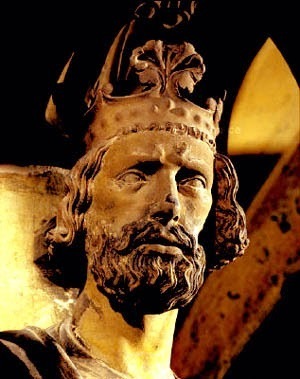
973 Henry II (the Saint), the fifth and last Holy Roman Emperor of the Ottonian dynasty, was born.

1527 Spanish and German troops sacked Rome, ending the Renaissance.

1536 King Henry VIII ordered English language Bibles to be placed in every church.

973 Henry II (the Saint), the fifth and last Holy Roman Emperor of the Ottonian dynasty, was born.

1527 Spanish and German troops sacked Rome, ending the Renaissance.

1536 King Henry VIII ordered English language Bibles to be placed in every church.
Published on May 06, 2015 01:00
May 5, 2015
Could a woman become a knight in medieval times?
History Extra
 A medieval knight had a number of set roles and duties – not least to fight in battle and lead men to war
A medieval knight had a number of set roles and duties – not least to fight in battle and lead men to war
As a result, it was usual for knights to be men who had trained for warfare from an early age. However, the situation wasn’t quite so clear-cut.
Any man who held enough land to afford the cost of arms and armour, and to take time away from his estates to join the army, was expected to be a knight. He would have to turn up at any military muster, mounted and armed, and very often would bring a retinue of men at arms or archers.
The king also expected knights to maintain law and order, ensure taxes were paid, and keep roads repaired and river crossings usable.
When a dead knight’s land passed to his wife or daughter, these duties were imposed on that woman. In England the title of Lady was usually given to such a woman, but in France, Tuscany and Romagna she was given the male title.
In 1358, women finally gained full knightly acceptance in England when they began to be admitted to chivalric orders – though they are called dames, not knights.
Answered by one of our Q&A experts, Rupert Matthews . For more fascinating questions by Rupert, and the rest of our panel, pick up a copy of History Revealed! Available in print and for digital devices .
 A medieval knight had a number of set roles and duties – not least to fight in battle and lead men to war
A medieval knight had a number of set roles and duties – not least to fight in battle and lead men to warAs a result, it was usual for knights to be men who had trained for warfare from an early age. However, the situation wasn’t quite so clear-cut.
Any man who held enough land to afford the cost of arms and armour, and to take time away from his estates to join the army, was expected to be a knight. He would have to turn up at any military muster, mounted and armed, and very often would bring a retinue of men at arms or archers.
The king also expected knights to maintain law and order, ensure taxes were paid, and keep roads repaired and river crossings usable.
When a dead knight’s land passed to his wife or daughter, these duties were imposed on that woman. In England the title of Lady was usually given to such a woman, but in France, Tuscany and Romagna she was given the male title.
In 1358, women finally gained full knightly acceptance in England when they began to be admitted to chivalric orders – though they are called dames, not knights.
Answered by one of our Q&A experts, Rupert Matthews . For more fascinating questions by Rupert, and the rest of our panel, pick up a copy of History Revealed! Available in print and for digital devices .
Published on May 05, 2015 17:11
'Ransacked' Roman Temple Has Hidden Medieval Secrets
Live Science
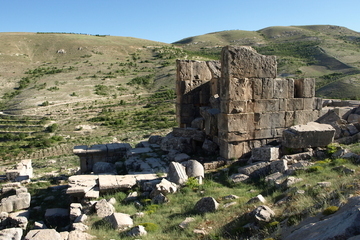
 The remains of the temple at Hosn Niha, likely built during the second century A.D. Look for the village settlement below the temple on the left of the picture.
The remains of the temple at Hosn Niha, likely built during the second century A.D. Look for the village settlement below the temple on the left of the picture.
Credit: Ruth Young View full size image
Despite damage from war, looters and agricultural activity, a Roman temple and settlement high in the Lebanese mountains still hold clues about the ancient and medieval people who once lived there, a new study finds.
finds.
Until now, little was known about Hosn Niha, a Roman-Byzantine village located in the Bekaa Valley in Lebanon, the researchers said. Built in approximately A.D. 200, the village was home to a Roman temple and a small settlement, they said.
In the early 1900s, German archaeologists studied the remains of the temple but paid little attention to the neighboring settlement, which they described in a 1938 study as "a picture of complete ransacking," adding that hardly a trace remained of the settlement's inhabitants. [See Images of the Roman Temple and Remains at Hosn Niha]
During the Lebanese Civil War (1975 to 1990), military activity and looting took a heavy toll on the remains of Hosn Niha. In the late 1980s, treasure hunters riding bulldozers scraped through the village, moving and damaging ancient clues buried in the ground, according to the new study.
But "even though the core of the village has been irreparably damaged, a significant amount of the site remains in situ [in its original place] and with enough surviving features and structural evidence to warrant further investigation," the researchers wrote in the new study, detailed in the April issue of the journal Antiquity.
Their diligence paid off. An analysis of pottery shards scattered around the village shows evidence of a large Greco-Roman settlement and a later medieval occupation, likely during the 13th or 14th centuries, the researchers said.
of pottery shards scattered around the village shows evidence of a large Greco-Roman settlement and a later medieval occupation, likely during the 13th or 14th centuries, the researchers said.
"What we were trying to do is show that sites that have been quite badly damaged by conflict shouldn't just be ignored and forgotten," said study researcher Ruth Young, a senior lecturer of archaeology at the University of Leicester in England. "I think that what we have now is a lot more knowledge about how villages operated and [their] connection with the temple."
'Blimey, what a mess'
When the researchers arrived at Hosn Niha, they found bulldozed piles — some reaching 13 feet high (4 meters) — of pottery fragments mixed with dirt, the researchers said.
"When you first look at the site, you think, 'Blimey, what a mess. Where do we even start?'" Young told Live Science .
.
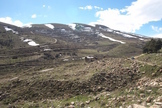 [image error]
[image error]
 This photo shows the area south of the Roman temple. It was once a central part of a village, but was bulldozed into piles of rubble during the Lebanese Civil War.
This photo shows the area south of the Roman temple. It was once a central part of a village, but was bulldozed into piles of rubble during the Lebanese Civil War.
Credit: Copyright Antiquity TrustView full size imageBut the bulldozers hadn't pushed the pottery fragments far from their original spots, usually less than 164 feet (50 m), the researchers said. They quickly got to work, using a precise form of global positioning system (GPS) called differential GPS to map architectural fragments, such as door thresholds, columns and stone walls.
positioning system (GPS) called differential GPS to map architectural fragments, such as door thresholds, columns and stone walls.
The researchers' understanding of the settlement grew as they carefully mapped the structures and dated the pottery fragments. They suggest a settlement was firmly in place by A.D. 200, with a dense area of dwellings in the central village and more dispersed courtyard dwellings skirting the village, the researchers said.
The village likely diminished by the 600s during the early Islamic period, though it's unclear why, they said. Today, the most complete remains of the site belong to the Roman temple, which still has walls standing 33 feet (10 m) high, the researchers said. [Gallery: Aerial Photos Reveal Mysterious Stone Structures]
The early inhabitants likely farmed in the valley, possibly growing grapes for wine, the researchers said. "This might explain why they were able to build such big temples," said study co-author Paul Newson, a professor of history and archaeology at the American University of Beirut in Lebanon. "If they were doing wine, they could do it as a cash crop."
crop."
The researchers also found glazed pottery shards, characteristic of the early medieval period, scattered around a stone structure, suggesting the structure was a medieval development, he said.
Looters had robbed a cemetery to the east of the settlement, but the archaeologists still studied the tomb types, including stone sarcophagi, individual cist (stone-lined) tombs and communal rock-cut tombs, they said.
The study is a "very good piece" of survey work "that could have been carried out at any archaeological site/landscape that had been damaged, or partially damaged," said Peter Stone, a professor and head of arts and cultures at Newcastle University in the United Kingdom, who was not involved with the study.
Many archaeological sites have been damaged over the ages. "So there is a positive that shows that sites believed to have been made totally useless specifically as a result of conflict do, or at least might, in fact still have valuable information to provide," Stone said.

 The remains of the temple at Hosn Niha, likely built during the second century A.D. Look for the village settlement below the temple on the left of the picture.
The remains of the temple at Hosn Niha, likely built during the second century A.D. Look for the village settlement below the temple on the left of the picture.Credit: Ruth Young View full size image
Despite damage from war, looters and agricultural activity, a Roman temple and settlement high in the Lebanese mountains still hold clues about the ancient and medieval people who once lived there, a new study
 finds.
finds.Until now, little was known about Hosn Niha, a Roman-Byzantine village located in the Bekaa Valley in Lebanon, the researchers said. Built in approximately A.D. 200, the village was home to a Roman temple and a small settlement, they said.
In the early 1900s, German archaeologists studied the remains of the temple but paid little attention to the neighboring settlement, which they described in a 1938 study as "a picture of complete ransacking," adding that hardly a trace remained of the settlement's inhabitants. [See Images of the Roman Temple and Remains at Hosn Niha]
During the Lebanese Civil War (1975 to 1990), military activity and looting took a heavy toll on the remains of Hosn Niha. In the late 1980s, treasure hunters riding bulldozers scraped through the village, moving and damaging ancient clues buried in the ground, according to the new study.
But "even though the core of the village has been irreparably damaged, a significant amount of the site remains in situ [in its original place] and with enough surviving features and structural evidence to warrant further investigation," the researchers wrote in the new study, detailed in the April issue of the journal Antiquity.
Their diligence paid off. An analysis
 of pottery shards scattered around the village shows evidence of a large Greco-Roman settlement and a later medieval occupation, likely during the 13th or 14th centuries, the researchers said.
of pottery shards scattered around the village shows evidence of a large Greco-Roman settlement and a later medieval occupation, likely during the 13th or 14th centuries, the researchers said."What we were trying to do is show that sites that have been quite badly damaged by conflict shouldn't just be ignored and forgotten," said study researcher Ruth Young, a senior lecturer of archaeology at the University of Leicester in England. "I think that what we have now is a lot more knowledge about how villages operated and [their] connection with the temple."
'Blimey, what a mess'
When the researchers arrived at Hosn Niha, they found bulldozed piles — some reaching 13 feet high (4 meters) — of pottery fragments mixed with dirt, the researchers said.
"When you first look at the site, you think, 'Blimey, what a mess. Where do we even start?'" Young told Live Science
 .
. [image error]
[image error]
 This photo shows the area south of the Roman temple. It was once a central part of a village, but was bulldozed into piles of rubble during the Lebanese Civil War.
This photo shows the area south of the Roman temple. It was once a central part of a village, but was bulldozed into piles of rubble during the Lebanese Civil War.Credit: Copyright Antiquity TrustView full size imageBut the bulldozers hadn't pushed the pottery fragments far from their original spots, usually less than 164 feet (50 m), the researchers said. They quickly got to work, using a precise form of global
 positioning system (GPS) called differential GPS to map architectural fragments, such as door thresholds, columns and stone walls.
positioning system (GPS) called differential GPS to map architectural fragments, such as door thresholds, columns and stone walls.The researchers' understanding of the settlement grew as they carefully mapped the structures and dated the pottery fragments. They suggest a settlement was firmly in place by A.D. 200, with a dense area of dwellings in the central village and more dispersed courtyard dwellings skirting the village, the researchers said.
The village likely diminished by the 600s during the early Islamic period, though it's unclear why, they said. Today, the most complete remains of the site belong to the Roman temple, which still has walls standing 33 feet (10 m) high, the researchers said. [Gallery: Aerial Photos Reveal Mysterious Stone Structures]
The early inhabitants likely farmed in the valley, possibly growing grapes for wine, the researchers said. "This might explain why they were able to build such big temples," said study co-author Paul Newson, a professor of history and archaeology at the American University of Beirut in Lebanon. "If they were doing wine, they could do it as a cash
 crop."
crop."The researchers also found glazed pottery shards, characteristic of the early medieval period, scattered around a stone structure, suggesting the structure was a medieval development, he said.
Looters had robbed a cemetery to the east of the settlement, but the archaeologists still studied the tomb types, including stone sarcophagi, individual cist (stone-lined) tombs and communal rock-cut tombs, they said.
The study is a "very good piece" of survey work "that could have been carried out at any archaeological site/landscape that had been damaged, or partially damaged," said Peter Stone, a professor and head of arts and cultures at Newcastle University in the United Kingdom, who was not involved with the study.
Many archaeological sites have been damaged over the ages. "So there is a positive that shows that sites believed to have been made totally useless specifically as a result of conflict do, or at least might, in fact still have valuable information to provide," Stone said.
Published on May 05, 2015 17:05
Archaeological dig at ancient fortress site in Egypt reveals massive gate and graves of fallen warriors
Ancient Origins
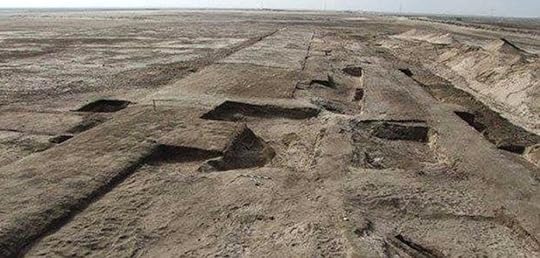 Remnants of an ancient Egyptian army camp and mass graves containing fallen warriors have been found buried in the desert ruins site of Tjaru by a team of archaeologists.
Remnants of an ancient Egyptian army camp and mass graves containing fallen warriors have been found buried in the desert ruins site of Tjaru by a team of archaeologists.
The impressive size of the eastern gate of the ancient Tjaru fortress is revealed by the fragments uncovered at the site. Bearing inscriptions of Pharaoh Ramses II, the limestone pieces are 15 meters (49 feet) long and one meter (3 feet) wide. This massive gate secured the Way of Horus between Palestine and Egypt.
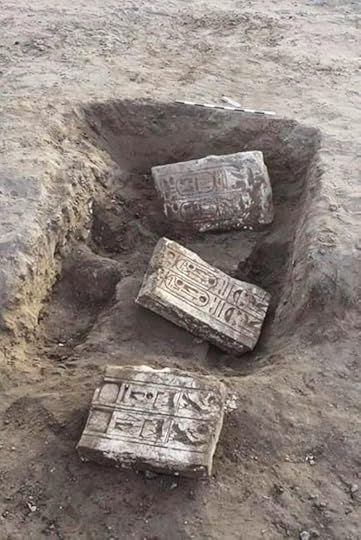
Large limestone fragments of the ancient gate at Tjaru Fortress, Egypt. Credit: Egypt Antiquities Ministry photoMamdouh al-Damaty, Minister of Antiquities in Egypt announced the discovery of the Egyptian army camp from the time of Thutmose III (Thutmosis) and Ramses II. The camp, located at the Tjaru Fortress in North Sinai (near present day Qantara) was led by the respective Pharaohs in the battles of Megiddo and Kadesh, reports Egypt Independent.
MORE
3,400-Year-Old Underwater Temple from Era of Thutmosis III Discovered near Cairo Newly discovered fortress on Way of Horus in Egypt stood sentinel against its enemies Gladiator School Discovery Reveals Hard Lives of Ancient Warriors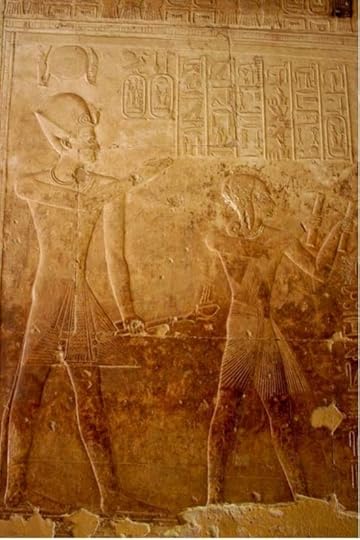
A bas-relief carving of Seti I and Ramses II at Abydos. A collection of reliefs of these two men was found during the recent digs around Tharu. ( Wikimedia Commons photo by Kurohito )The 3,000-year-old ruin site of Tjaru was home to an ancient fortress on the Way of Horus. Due to its remote and hostile environment it was also said to be a place of exile for criminals. The Way of Horus, or the Horus Military Road, led out of Egypt into Canaan (present day Gaza Strip). Along the route was a series of military forts with water reservoirs. These measures served as protection for ancient Egypt’s eastern borders.
“It was a key starting point for military campaigns during Egypt’s New Kingdom period (1580 B.C. – 1080 B.C.)” reports The Cairo Post.
 This Google Map shows the present-day route of the ancient Horus Military Route from Qantara to Rafah. The body of water to the north is the Mediterranean Sea.Archaeologists, working 3 kilometers (approximately 2 miles) east of the Suez Canal, also discovered several storage sites with seals bearing the name of Pharaoh Tuthmose III, as well as the graves and skeletal remains of soldiers who were killed in battle during the 26th Dynasty.
This Google Map shows the present-day route of the ancient Horus Military Route from Qantara to Rafah. The body of water to the north is the Mediterranean Sea.Archaeologists, working 3 kilometers (approximately 2 miles) east of the Suez Canal, also discovered several storage sites with seals bearing the name of Pharaoh Tuthmose III, as well as the graves and skeletal remains of soldiers who were killed in battle during the 26th Dynasty.
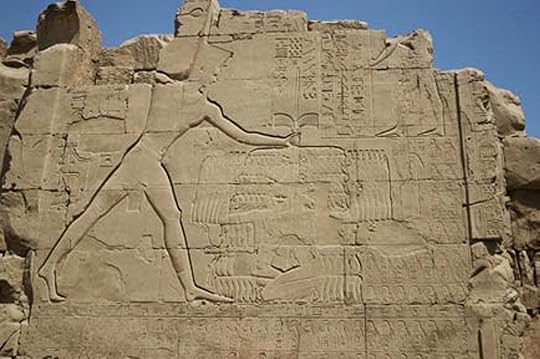
Thutmose III smiting his enemies. Relief on the seventh pylon in Karnak. Wikipedia Thutmose III was the sixth Pharaoh of the 18th Dynasty. During the first 22 years of his reign, he was co-regent with his stepmother and aunt Hatshepsut, famous for taking on the male role of Pharaoh. After her death and his later rise to pharaoh of the kingdom, Thutmose III created the largest empire Egypt had ever seen, through numerous successful campaigns.
MORE
Oldest Roman Military Camp discovered in Italy was Built to Fend off Fierce Pirates New Dig at First Emperor Mausoleum Expected to Yield up to 1400 More Terracotta Warriors The Life and Death of Ramesses II Ramses II, the third Pharaoh of the 19th Dynasty, came to power during his late teens after the death of Seti I, his father. His long reign of 66 years was recorded as prosperous, and at the time he was considered one of the most powerful men on earth. Ramses II undertook numerous military campaigns against neighboring regions.
The artifacts from Tjaru are set to go on display at a Military History Museum planned for the eastern bank of the Suez Canal.
Speaking earlier this year to The Cairo Post, chief of the Tjaru excavation team, archaeologist Mohammed Abdel-Maqsoud said, “The discovery is significant as it reflects the details of the ancient Egyptian military history. It is a model example of Ancient Egypt’s military architecture, as well as the Egyptian war strategies through different ages, for the protection of the entirety of Egypt.”
Featured Image: The ruins of the fortress near the ancient fortified city of Tell Habua (Tjaru) after recent excavations. Credit: Egypt Antiquities Ministry photo
 Remnants of an ancient Egyptian army camp and mass graves containing fallen warriors have been found buried in the desert ruins site of Tjaru by a team of archaeologists.
Remnants of an ancient Egyptian army camp and mass graves containing fallen warriors have been found buried in the desert ruins site of Tjaru by a team of archaeologists.The impressive size of the eastern gate of the ancient Tjaru fortress is revealed by the fragments uncovered at the site. Bearing inscriptions of Pharaoh Ramses II, the limestone pieces are 15 meters (49 feet) long and one meter (3 feet) wide. This massive gate secured the Way of Horus between Palestine and Egypt.

Large limestone fragments of the ancient gate at Tjaru Fortress, Egypt. Credit: Egypt Antiquities Ministry photoMamdouh al-Damaty, Minister of Antiquities in Egypt announced the discovery of the Egyptian army camp from the time of Thutmose III (Thutmosis) and Ramses II. The camp, located at the Tjaru Fortress in North Sinai (near present day Qantara) was led by the respective Pharaohs in the battles of Megiddo and Kadesh, reports Egypt Independent.
MORE
3,400-Year-Old Underwater Temple from Era of Thutmosis III Discovered near Cairo Newly discovered fortress on Way of Horus in Egypt stood sentinel against its enemies Gladiator School Discovery Reveals Hard Lives of Ancient Warriors

A bas-relief carving of Seti I and Ramses II at Abydos. A collection of reliefs of these two men was found during the recent digs around Tharu. ( Wikimedia Commons photo by Kurohito )The 3,000-year-old ruin site of Tjaru was home to an ancient fortress on the Way of Horus. Due to its remote and hostile environment it was also said to be a place of exile for criminals. The Way of Horus, or the Horus Military Road, led out of Egypt into Canaan (present day Gaza Strip). Along the route was a series of military forts with water reservoirs. These measures served as protection for ancient Egypt’s eastern borders.
“It was a key starting point for military campaigns during Egypt’s New Kingdom period (1580 B.C. – 1080 B.C.)” reports The Cairo Post.
 This Google Map shows the present-day route of the ancient Horus Military Route from Qantara to Rafah. The body of water to the north is the Mediterranean Sea.Archaeologists, working 3 kilometers (approximately 2 miles) east of the Suez Canal, also discovered several storage sites with seals bearing the name of Pharaoh Tuthmose III, as well as the graves and skeletal remains of soldiers who were killed in battle during the 26th Dynasty.
This Google Map shows the present-day route of the ancient Horus Military Route from Qantara to Rafah. The body of water to the north is the Mediterranean Sea.Archaeologists, working 3 kilometers (approximately 2 miles) east of the Suez Canal, also discovered several storage sites with seals bearing the name of Pharaoh Tuthmose III, as well as the graves and skeletal remains of soldiers who were killed in battle during the 26th Dynasty.
Thutmose III smiting his enemies. Relief on the seventh pylon in Karnak. Wikipedia Thutmose III was the sixth Pharaoh of the 18th Dynasty. During the first 22 years of his reign, he was co-regent with his stepmother and aunt Hatshepsut, famous for taking on the male role of Pharaoh. After her death and his later rise to pharaoh of the kingdom, Thutmose III created the largest empire Egypt had ever seen, through numerous successful campaigns.
MORE
Oldest Roman Military Camp discovered in Italy was Built to Fend off Fierce Pirates New Dig at First Emperor Mausoleum Expected to Yield up to 1400 More Terracotta Warriors The Life and Death of Ramesses II Ramses II, the third Pharaoh of the 19th Dynasty, came to power during his late teens after the death of Seti I, his father. His long reign of 66 years was recorded as prosperous, and at the time he was considered one of the most powerful men on earth. Ramses II undertook numerous military campaigns against neighboring regions.
The artifacts from Tjaru are set to go on display at a Military History Museum planned for the eastern bank of the Suez Canal.
Speaking earlier this year to The Cairo Post, chief of the Tjaru excavation team, archaeologist Mohammed Abdel-Maqsoud said, “The discovery is significant as it reflects the details of the ancient Egyptian military history. It is a model example of Ancient Egypt’s military architecture, as well as the Egyptian war strategies through different ages, for the protection of the entirety of Egypt.”
Featured Image: The ruins of the fortress near the ancient fortified city of Tell Habua (Tjaru) after recent excavations. Credit: Egypt Antiquities Ministry photo
Published on May 05, 2015 16:58
Archaeologists find 4,500-year-old statue of little known Egyptian king
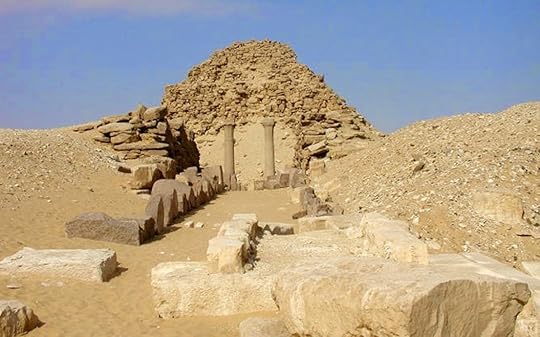 Ancient Origins
Ancient OriginsA broken statue with the name of King Sahure, a pharaoh who ruled nearly 4,500 years ago, has been excavated in Egypt by Belgian archaeologists. Little is known of King Sahure, who reigned during the Old Kingdom’s Fifth Dynasty.
The find is “of great significance and importance,” said the Egyptian Ministry of Antiquities, particularly as there are only two other intact statues that exist of Sahure. The team of Belgian archaeologists intend to continue excavating in the area with the aim of finding other artifacts pertaining to Sahure.
The other two known statues of Sahure still intact are on display at the Egyptian Museum in Cairo and New York’s Metropolitan Museum.
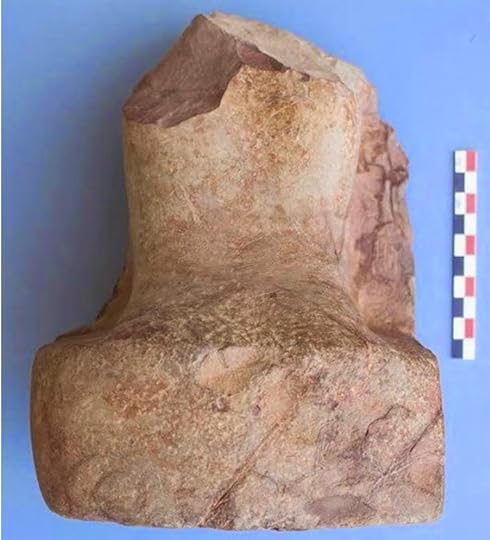 King Sahure’s name was engraved on the bottom part of a broken statue unearthed by Belgian archaeologists. (Photo by Egyptian Antiquities Ministry)
King Sahure’s name was engraved on the bottom part of a broken statue unearthed by Belgian archaeologists. (Photo by Egyptian Antiquities Ministry)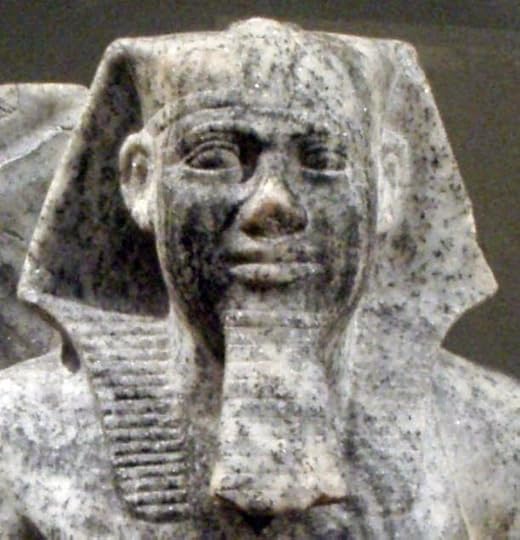
Gneiss statue of Sahure and a nome god in the Metropolitan Museum of Art in New York City. (Photo by Keith Schengili-Roberts / Wikimedia Commons )
The Ministry of Antiquities said it believes the base, which measures 21cm (8.3 inches) is the bottom half of a larger statue of King Sahure seated on a throne, which probably measured around 70cm (27.6 inch) in height.
The statue was excavated in Egypt’s governate of Aswan, about 580 km (360 miles) south of Cairo. Aswan is the ancient city of Swenett, which in antiquity was the frontier town of Ancient Egypt facing the south.
Sahure’s name means ‘He who is close to Re’. Re, also spelt Ra, was considered to be the god of the sun and a creator god. He ruled for 12 years and was the second king of the Fifth Dynasty. Egyptologists believe he was the first son of Queen Khentkaues. Another of her sons is also believed to have ruled Egypt.
Sahure had the first pyramid complex at Abusir. Many reliefs at the complex are well-done, says Tour Egypt, but it marks the decline in size and quality of pyramids. He also is thought to have built a sun temple but the location of it is not known.
Most foreign relations during the reign of Sahure were economic, rather than combative. In one scene, we find great ships with Egyptians and Asiatics on board. They are returning, we believe, from the port of Byblos in Lebanon with huge cedar trees. For this, we have collaborating evidence in the form of his name on a piece of thin, gold stamped to a chair, as well as other evidence of 5th Dynasty king's cartouches found in Lebanon on stone vessels. Other scenes in his temple depict what we are told are Syrian bears. We also have the first documented expedition to the land of Punt, which apparently yielded a quantity of myrrh, along with malachite and electrum, and because of this, Sahure is often credited with establishing an Egyptian navy. There is also scenes of a raid into Libya which yielded various livestock and showed the king smiting the local chieftains. The Palermo Stone also collaborates some of these events.—Tour Egypt.Earlier in April 2015, German and Egyptian archaeologists excavating an ancient mud brick temple site in Cairo unearthed part of a chapel used by a pharaoh who came much later than Sahure. Pharaoh Nectanbebo 1 of the 30th Dynasty of 380 to 340 BC built the chapel in the capital of Heliopolis. The praying area in the temple “consists of carved basalt blocks in addition to a part of a royal statue carrying a cartouche of King Merineptah,” said the Antiquities Ministry. The cartouche shows a song of King Rameses II making an offering to a god. The temple finding is rare in the vicinity of Cairo because stone building materials from ancient structures were used in later projects, in 12th century AD in Islamic Cairo.
Featured Image: The ruins of Sahure’s pyramid ( Photo by John Bodsworth /Wikimedia Commons)
Published on May 05, 2015 16:49
The Briton and the Dane featured on AudioBookBlast

In ninth century England when bloodthirsty Vikings pillaged their way across the length and the breadth of the windswept lands, a wounded Danish Viking is secretly given succor by a young Anglo-Saxon woman who is besotted with the enemy prince. Will love overcome treachery and betrayal or cause their ruin?
 The Briton and the DaneAuthor: Mary Ann Bernal
The Briton and the DaneAuthor: Mary Ann BernalNarrator: Sebastian Lockwood
Length: 11 hrs and 30 mins
This is a Listen & Review title. The author will gift you the book directly from Audible and you will have 30 days to listen to the book and give an unbiased review. You are NOT required to give a positive review, only an honest one. These titles are given out at the rights holder's discretion and Audiobook Blast does not guarantee that you will be awarded this or any title.
Click for submission form
Published on May 05, 2015 06:22
History Trivia - Rebel barons renounce their allegiance to King John of England
May 5,

984 Gerberga of Saxony, Queen of Western Francia died.
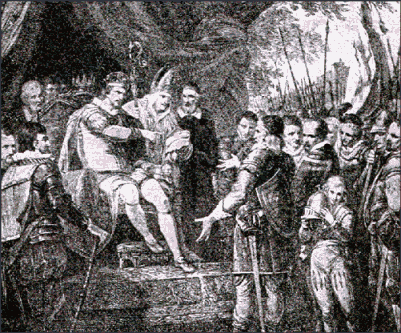
1215 Rebel barons renounced their allegiance to King John of England, which led to the signing of the Magna Carta.

1640 King Charles I of England dissolved the Short Parliament.

984 Gerberga of Saxony, Queen of Western Francia died.

1215 Rebel barons renounced their allegiance to King John of England, which led to the signing of the Magna Carta.

1640 King Charles I of England dissolved the Short Parliament.
Published on May 05, 2015 02:00
May 4, 2015
History Trivia - Yorkists defeat the Lancastrians at the battle of Tewkesbury
May 4,

1256 The Augustinian monastic order was constituted at the Lecceto Monastery in Tuscany when Pope Alexander IV issued a papal bull Licet ecclesiae catholicae.
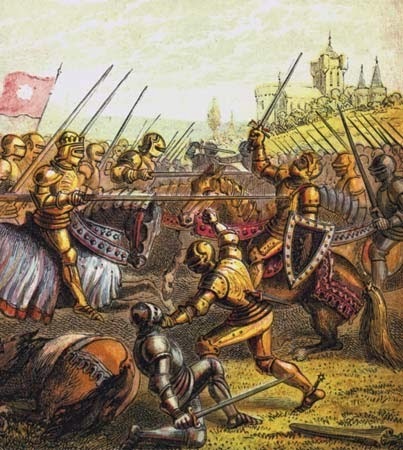
1471 Wars of the Roses: the Yorkists defeated the Lancastrians at the battle of Tewkesbury.

1493 Pope Alexander VI divided the New World between Spain and Portugal along the Line of Demarcation.

1256 The Augustinian monastic order was constituted at the Lecceto Monastery in Tuscany when Pope Alexander IV issued a papal bull Licet ecclesiae catholicae.

1471 Wars of the Roses: the Yorkists defeated the Lancastrians at the battle of Tewkesbury.

1493 Pope Alexander VI divided the New World between Spain and Portugal along the Line of Demarcation.
Published on May 04, 2015 02:00



